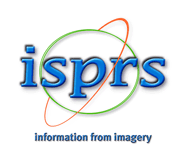Geospatial Technique to make Indian Cities Accessible for Persons with Disabilities
Keywords: GIS, disabilities, Universal Accessibility
Abstract. Accessibility is realized when individuals with specific mobility, visual, auditory, or cognitive requirements can navigate and utilize the built environment with minimal need for adaptation. In India, almost twenty-seven million people live with some form of disability (census 2011). Between 2001 and 2011, the total number of persons with disabilities in India increased by 22.41%. Notably, the urban population with disabilities saw a rise of 48.21%, compared to just 13.72% in rural areas. This disparity emphasizes the urgent need to enhance accessibility in Indian cities for persons with disabilities. According to the National Sample Survey (2018), 85.5% of persons with disabilities in urban areas had trouble accessing public transportation, while 61.7% encountered challenges in accessing public buildings. These findings highlight the critical need to enhance the accessibility of the built environment in urban India. In this research, the potential of geospatial approach has been explored to assess universal accessibility of Indian cities taking Bhopal as case study city. Bhopal city is a tier II city in the state of Madhya Pradesh in India. This study devises a method to prepare GIS maps using access audit results which will show zones of high, moderate, and low accessibility in the context of mobility of a visitor with disabilities. These maps will help to identify part of the city falling within zones of low and moderate accessibility and the reason behind it. Another advantage of using GIS will be customized maps for each disability type can be prepared and the outcome will be generalized for other relevant cities. Geospatial maps will be used for spatial planning to make Bhopal accessible.





